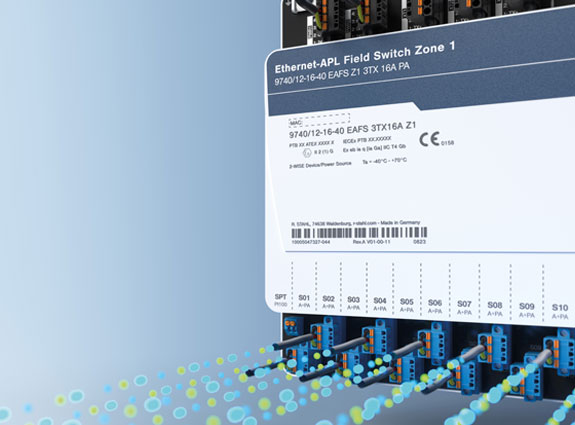It seems straightforward: Cool natural gas to a low enough temperature and there you have it – the coveted LNG. But it's not quite that simple. And what's more, nothing can happen without explosion protection and safety requirements must be met, which Russell McNeal clarifies.
1. IN THE PROCESS CHAIN OF LNG PRODUCTION, THERE ARE MANY STAGES OF GAS PURIFICATION BEFORE LIQUEFACTION ITSELF. ARE THERE ANY PRELIMINARY STAGES THAT ARE PARTICULARLY CRITICAL IN TERMS OF EXPLOSION PROTECTION?
LNG is produced by cryogenically cooling natural gas to a temperature below -162 °C in a gas liquefaction plant (LNG train). Before this can occur, however, detrimental or toxic components in the raw natural gas need to be separated out via a process of absorption, washing out or pre-cooling to -35 °C. The actual process of liquefaction of almost pure methane consists of a sequence of compression, cooling (heat extraction) and pressure relief stages, which is repeated until the natural gas has reached liquid state. The requirements regarding explosion protection are extremely strict. Natural gas and LNG are extremely flammable; according to ATEX and IECEx, they belong to explosion group IIA. For North America it is Group D.
There is an explosion hazard not only during the actual liquefaction process, but through out the entire process, including purification and transport to individual plants or plant parts. So precautions to avoid explosions must be taken at all stages of gas pre-treatment and separation.
2. VARIOUS PROCESSES CAN BE USED FOR LIQUEFACTION, WHICH DIFFER IN THE ARRANGEMENT OF THE COOLING CIRCUITS AND THE TYPE OF REFRIGERANT. WHICH OF THESE PROCESSES IS USED IN NEWER PLANTS AND WHAT ARE THE SAFETY CHALLENGES?
There are many different LNG liquefaction technologies (small, mid and large scale) in use around the globe currently. Owners select a technology based on their business plan and schedule. The more-established “large scale” technologies require lots of capital, time and equipment to get up and running. The newer small & mid-scale technologies have shorter schedules and are less-capital intensive allowing for quicker ROI but require more units to produce the same amount of LNG. Each of these types process hazardous gases so in that respect, they are all similar.
3. What levers are there in the design of an LNG train to reconcile the necessary safety in the liquefaction process with the required economic efficiency and environmental compatibility?
The typical design for any LNG liquefaction facility is long and involved plus includes many, many stages of safety checks throughout the entire design process. The EPC and consulting companies designing these facilities are experienced and use licensed Professional Engineers for final approval of drawings, designs, etc. In the USA for example, these facilities require many permits from government agencies such as the Federal Energy Regulatory Commission (FERC) to help insure safe operation at each plant. Decisions about economic considerations while meeting environmental constraints are made by each owner early in the cycle to insure they can produce an asset that meets their needs and is safe.
4. Do the safety requirements for natural gas liquefaction differ offshore (FLNG) and onshore?
Many of the same hazards exist in both types of installations but there are some differences between on and offshore applications. The same gases are processed so explosion protection techniques are still required.
5. What aspects are particularly important to consider in offshore liquefaction?
Offshore facilities do not have the same interaction with everyday activities of personnel and communities so there is built-in separation and thus safety factor to avoid some of the risks. From a hazardous area perspective, being offshore means less interruption of the wind that would dissipate a cloud of gas if released.






![[Translate to Englisch:] [Translate to Englisch:]](/fileadmin/user_upload/mitarbeiter/01_DE/07_Blog/00_Allgemein/blog-explosionsschutz-rstahl-startseite-279x205.jpg)
![[Translate to Englisch:] [Translate to Englisch:]](/fileadmin/user_upload/mitarbeiter/01_DE/07_Blog/00_Allgemein/blog-explosionsschutz-rstahl-ueber-den-blog-279x205.jpg)
![[Translate to Englisch:] [Translate to Englisch:]](/fileadmin/user_upload/mitarbeiter/01_DE/07_Blog/00_Allgemein/blog-explosionsschutz-rstahl-autoren-279x205.jpg)
![[Translate to Englisch:] [Translate to Englisch:]](/fileadmin/user_upload/mitarbeiter/01_DE/07_Blog/00_Allgemein/blog-explosionsschutz-rstahl-newsletter-expert-mail-279x205.jpg)
Write new comment